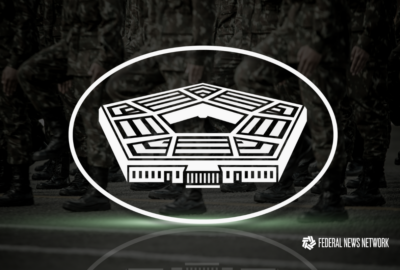Hubbard Radio Washington DC, LLC. All rights reserved. This website is not intended for users located within the European Economic Area.
On Air: Federal News Network
Trending:
Army deploys first fruits of agile acquisition process
Hundreds of pieces of equipment the Army has assembled as part of its new network modernization strategy will deploy with soldiers to Afghanistan on Oct. 1, ...
wfedstaff | April 17, 2015 3:55 pm
It was just over a year ago that the Army began its first Network Integration Evaluation at Fort Bliss, Texas. In just a few months though, hundreds of pieces of equipment the Army evaluated through those twice-a-year exercises will begin making their way to Afghanistan as part of a new agile acquisition process that the Army says will fundamentally change the way it does business.
Upwards of 600 separate systems and vehicles are in what the Army refers to as Capability Set 13, made up of thousands of individual pieces of equipment from Mine Resistant Ambush Protected (MRAP) vehicles to routers and switches, but most it focused on the network and tactical communications. That set will deploy for the first time on Oct. 1, outfitting two brigade combat teams of a few thousand deploying soldiers each.
It’s the first on-the-battlefield test of two relatively new concepts in the Army: capability set management and the agile acquisition process.
“If we’d talked to you about 18 months ago, this would have been a PowerPoint presentation and a theory about how we’re going to do network modernization,” Brig. Gen. John Morrison, who directs the LandWarNet Mission Command for the Army staff, told reporters during a Pentagon roundtable. “What I’m here to tell you today is we are now executing that strategy.”
Among the hundreds of systems are two major capabilities the Army has sought for a long time. One: mission command on the move. Through increment two of the WIN-T program, commanders are supposed to get the same situational awareness and communications capabilities they’d have in a static command post, but in a mobile command center as it roams across a battlefield.
Also, the Nett Warrior system promises give individual dismounted soldiers the ability to look at a small, Android-based handheld device and see where fellow troops and enemy fighters are located.
Systems deployed as integrated network
Army leaders say the fact that they were able to rework and deploy those systems in a relatively short timeframe is a testament to their new processes, including the NIE at Fort Bliss. But perhaps more important, they say, is how they’re being deployed: Not piece by piece, but as part of an integrated network of pieces that’s been tested to work together beforehand.
That pre-assembled puzzle is what Army calls a capability set. The NIE exercises will help produce a new one every year, and rather than handing them out to the whole Army, leaders will outfit only the soldiers who are currently deploying.
“They’re not just getting a box,” Morrison said. “They’re getting an integrated network and they’re getting all of the tactics, techniques and procedures that have already been learned in an operational setting. That’s absolutely huge.”
Col. Dan Hughes, who was scheduled to accept a promotion to brigadier general Monday, said the agile modernization strategy only works because of the NIE. He said not only does the exercise put the gear the Army wants to buy into the hands of soldiers for real-time feedback, it also forces the multitude of historically stovepiped Army organizations which plan, test and buy that gear to come together in one place, at one time, and on one schedule.
“Think about the number of pieces of kit and gear that goes into a unit. Before, we would have 10 program executive officers and 100 program managers show up at different times in an unsynchronized manner. Capability set management is all about bringing all of that together and producing a single capability,” said Hughes, who directs the System of Systems Integration directorate for the Army’s acquisition organization. “The NIE showed us how I can field things better and faster, and not only what my capabilities are but what my limitations are. Now, the unit that’s getting this capability set knows what it’s getting and they can field it in a timely manner.”
Buying things for the battlefield quickly isn’t new in and of itself. DoD been doing it for the past decade, using various special acquisition authorities and workarounds to meet urgent needs for soldiers, sailors airmen and marines.
Doing rapid acquisition well and consistently
What is new, according to Maj. Gen. Genaro Dellarocco, the commander of Army Test and Evaluation Command, is doing rapid acquisition well and doing it consistently.
“We put a lot of equipment downrange that may not have met the 100 percent solution. In most cases it didn’t meet 60 percent. In fact, a lot of times, it was even less because we were desperate to save soldiers’ lives and get at the enemy,” he said. “In doing so, a lot of the equipment wasn’t vetted until it got to the battlefield. The tactics, techniques and procedures weren’t figured out until the soldier put it in his hands and started using it. Some of it worked and some of it didn’t. That experience now is pulled back into the States and we’re doing it here. It’s been vetted so that we don’t have the same mistakes that we’ve paid for dearly, literally in lives and monetarily.”
A majority of the equipment the Army is fielding in this capability set is the result of programs the Army has already been working on for years, with a lot of restructuring in many cases. But leaders say they want to shift more to commercial technologies that are offered up by industry in response to sources sought notices the Army will publish twice a year.
In those cases, Morrison said the Army will happily accept an 80 percent solution if it makes sense: soldiers at least will know what they’re getting before the equipment goes into battle.
“When you don’t have the capability in the field today, sometimes the 80 percent solution is more than good enough because it’s better than having absolutely nothing,” he said. “We want to establish building blocks and do incremental modernization. We’re getting operational feedback on our requirements, making sure the requirements are about right, and putting it in the hands of our operational formations.”
Modified smartphone replaces 14 pounds of equipment
Nett Warrior, the force-tracking Android program which operates on a slightly modified commercially-available smartphone is a prime example, he said. The Pentagon had been trying on its own to produce the capabilities the program now offers for decades. The previous iteration included a heavy computer worn in a backpack and a monocle worn over a soldier’s eye.
“If you take 14 pounds off of an infantryman and give him a 1-1/2-pound device with all of the same mission command functionality, I’d say we’re giving them an improved capability that significantly outweighed what we were trying to develop ourselves,” Morrison said.
The NIE process came about because the leaders came to the realization that building IT systems is no longer an Army core competency, he said. And with regard to Nett Warrior, the process showed that the service had been trying to build an expensive capability based on requirements that were long out of date and way over the top.
“There was a requirement on the program that it had to operate under one meter of water for two hours,” he said. “This was a computer that was going to be strapped to a soldier’s back, and if that soldier was under a meter of water for two hours, it didn’t matter if the equipment was working. We all sort of chuckle about that now, but that’s what putting things into this operational venue does. It forces us to operationally validate our requirements versus just running it through some bureaucratic process here inside the building.”
The Army just finished its third NIE at Fort Bliss, finalizing and validating the set of equipment that will start deploying in October. After the first two brigades are equipped, the Army will outfit another six teams in fiscal year 2013 and then move on to next year’s capability set, which is already in the early stages of development and integration.
But Army leaders say the next batch of gear and all future sets will still be based on a published set of industry-led network standards that it plans to ruthlessly enforce. Under that scheme, they’ll theoretically be able to unplug one piece of 80-percent- solution gear and plug in one that achieves perhaps 85 percent as new technology becomes available.
RELATED STORIES:
Army’s Network Integration Evaluation puts ideas into soldiers’ hands
Buying commercial in DoD: 15 years after acquisition reform
Buying commercial in DoD: Pentagon struggles to stay away from customization
Army readies new network standards
Copyright © 2024 Federal News Network. All rights reserved. This website is not intended for users located within the European Economic Area.
Jared Serbu
Jared Serbu is deputy editor of Federal News Network and reports on the Defense Department’s contracting, legislative, workforce and IT issues.
Follow @jserbuWFED





